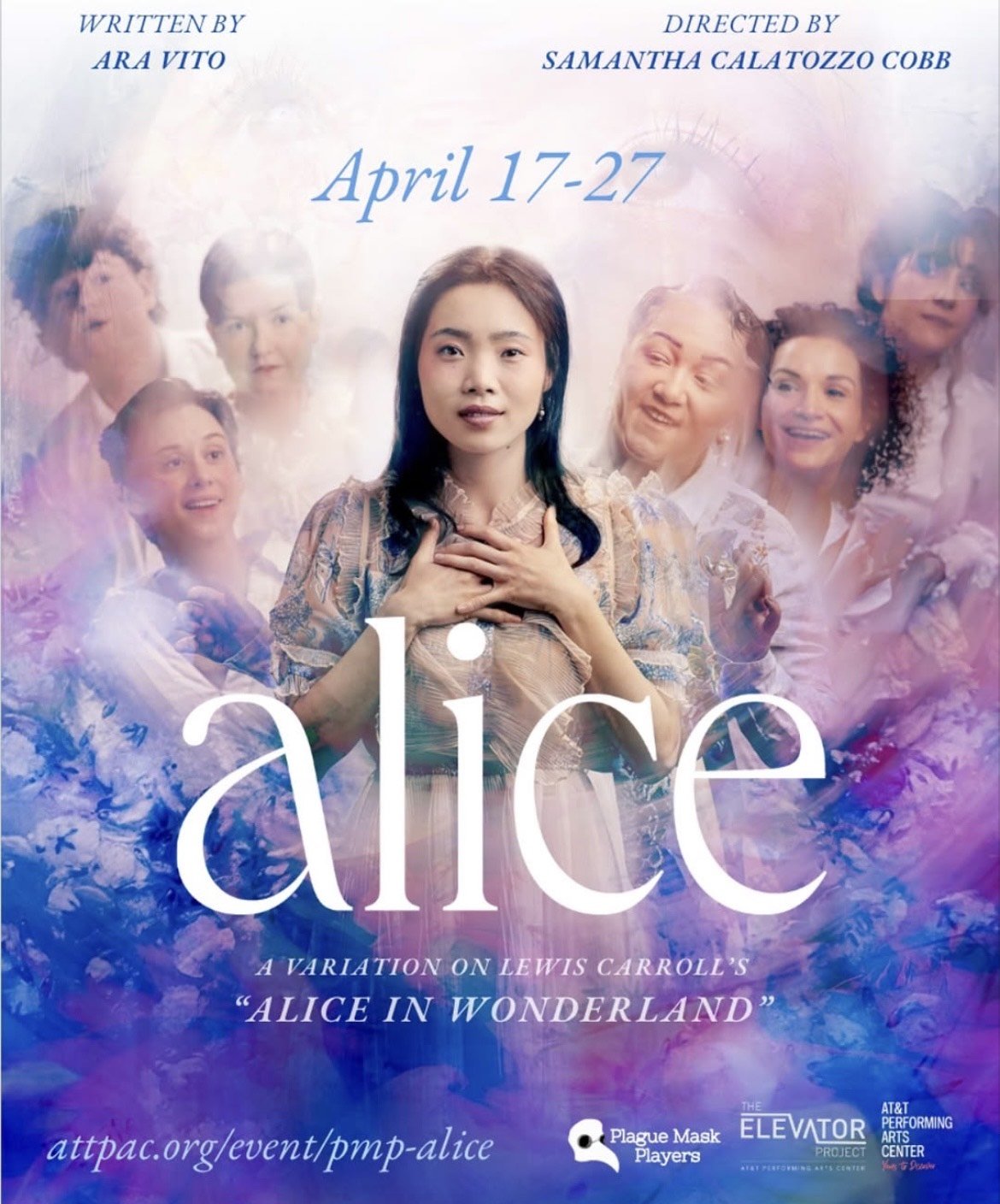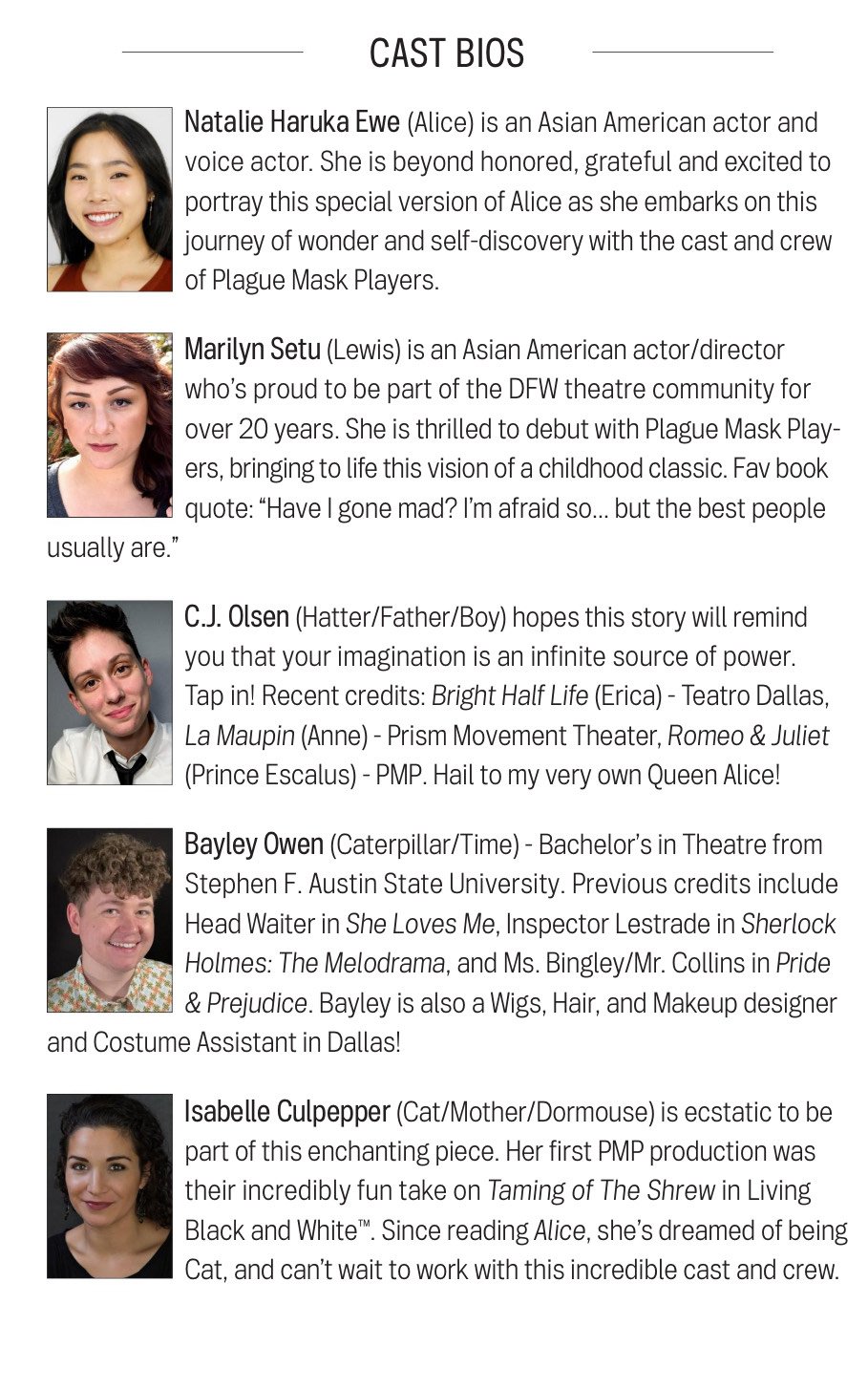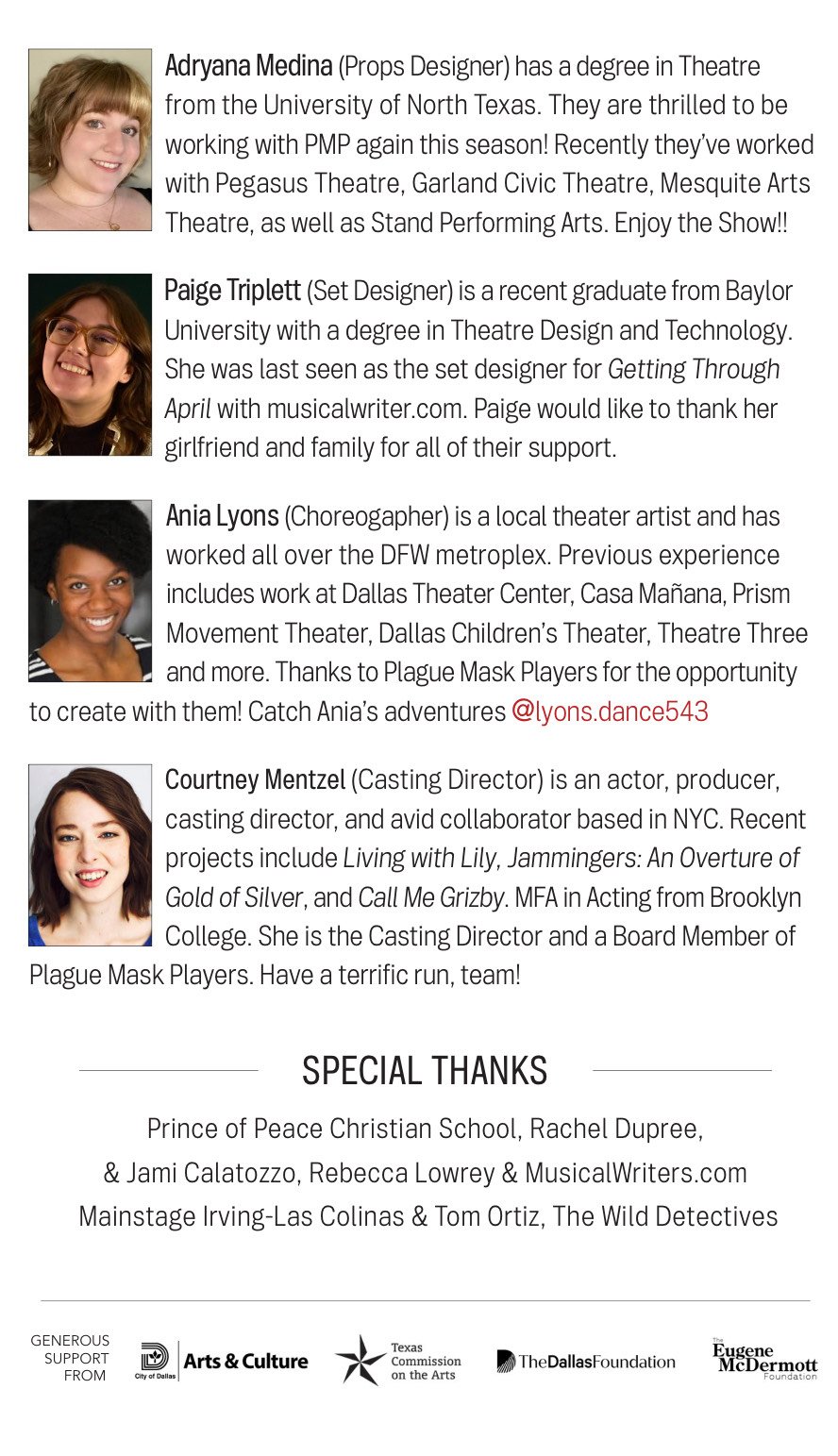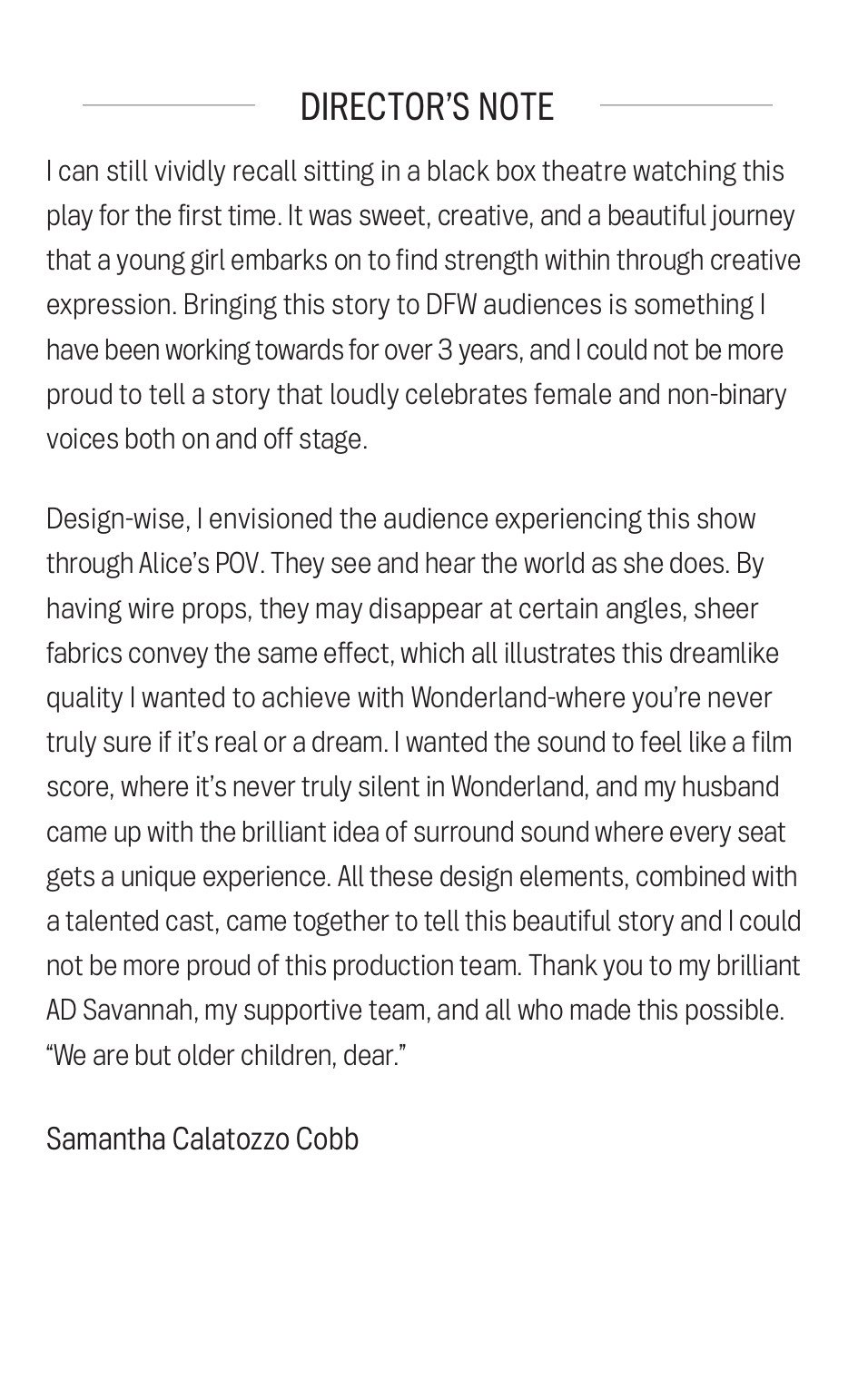Alice
My thoughts on Alice A Variation on Lewis Carroll’s Alice in Wonderland by Ara Vito or…Go ask Alice. Now she knows.
I wasn’t excited to be going to see yet another version of Alice in Wonderland, but within minutes of this Alice written by Ara Vito and deftly directed by Samantha Calatozzo Cobb, I was a goner, totally enrapt by this intelligent, imaginative, and engaging play.
There is white everywhere at first. Both sets of steps, the doors, and the rectangular raised platform in the middle of the performance area designed by Paige Triplett are all white. Initially it is oddly soothing and ushers us into the dreamlike state that Director Cobb creates. Soon the colors start to appear, but they never overwhelm. The costumes designed by Cobb and Savannah Lloyd are often suggested by a length of gauze or a sash, just dashes of color here and there, but that comforting “bedtime” white is always there. What Cobb captures here is not only a dreamlike scenario, but also a playful one.
By playful I mean actual childhood playing. It made me remember those days when my swing set became a fortress and I could hide from pirates in a cardboard box. It was, to borrow a phrase from Willie Wonka, “a world of pure imagination,” and that is the atmosphere Cobb evokes. It is all creatively lighted by Mia Lindemann and Jared Cobb’s sound that always surrounds us could not be better.
Playwright Ara Vito takes Alice on a journey of self-discovery in this coming of age play. To Alice’s vain mother, played by Isabelle Culpepper with delicious meanness, and her too busy to care father, played by C.J. Olsen, she is an inconvenience. Hence, Alice, played by Natalie Aruka Ewe, spends most of her days alone. When she breaks her mother’s mirror her adventures in Wonderland begin.
In this version Alice has a guide to lead her, none other than Lewis Carroll himself. The terrific Marilyn Setu makes Carroll a kind and gentle man concerned for Alice and loving but determined that she will find her own way. Along the way, Alice meets almost all the characters from Alice in Wonderland. However, Vito gives each one a different spin and Cobb enhances the characters through costuming and staging. Bayley Owen’s resonant theatrical voice gives the Caterpillar great presence as does the very long body. Isabelle Culpepper, in addition to being the bad mom, is a wonderful poetic Cat and Dormouse. Henri Sudy, as the Twin (Vito’s version of Tweedledum and Tweedledee) demonstrates some top-notch comic skill portraying two characters having a conversation at once. The Twin also gives Alice good advice telling her that “alone is a word, nothing more.” Jaclyn Thomas is genuinely frightening as the loud, demanding Queen of Hearts and the Jabberwocky.
In my favorite story from Alice’s journey, the Hatter, played with almost poignant sincerity by C. J. Olsen, is in love with Time. Time, personified by Bayley Owen, looking and sounding positively magisterial, reminds the Hatter that “time waits for no man.” But Time relents a bit taken in by the Hatter’s gift of a rose and his ardency, and they perform a lovely dance together choreographed by Ania Lyons. It is a magical moment.
Natalie Haruka Ewe brings empathy and charm to the character of Alice and is perfection as the young girl. In a muted, bluish ombre dress, she reflects the dreamlike aura of the play and her transition from lonely little girl lost to a stronger, confident, creative young woman is a pleasure to watch.
Ara Vito’s bright dialogue and Cobb’s clever staging make this Alice a trip through the looking glass you don’t want to miss, and it just might touch that inner child who is waiting to come out and play.
*Special kudos to the Plague Mask Players for casting an all female or nonbinary Alice and that includes most of the creatives and crew as well!










